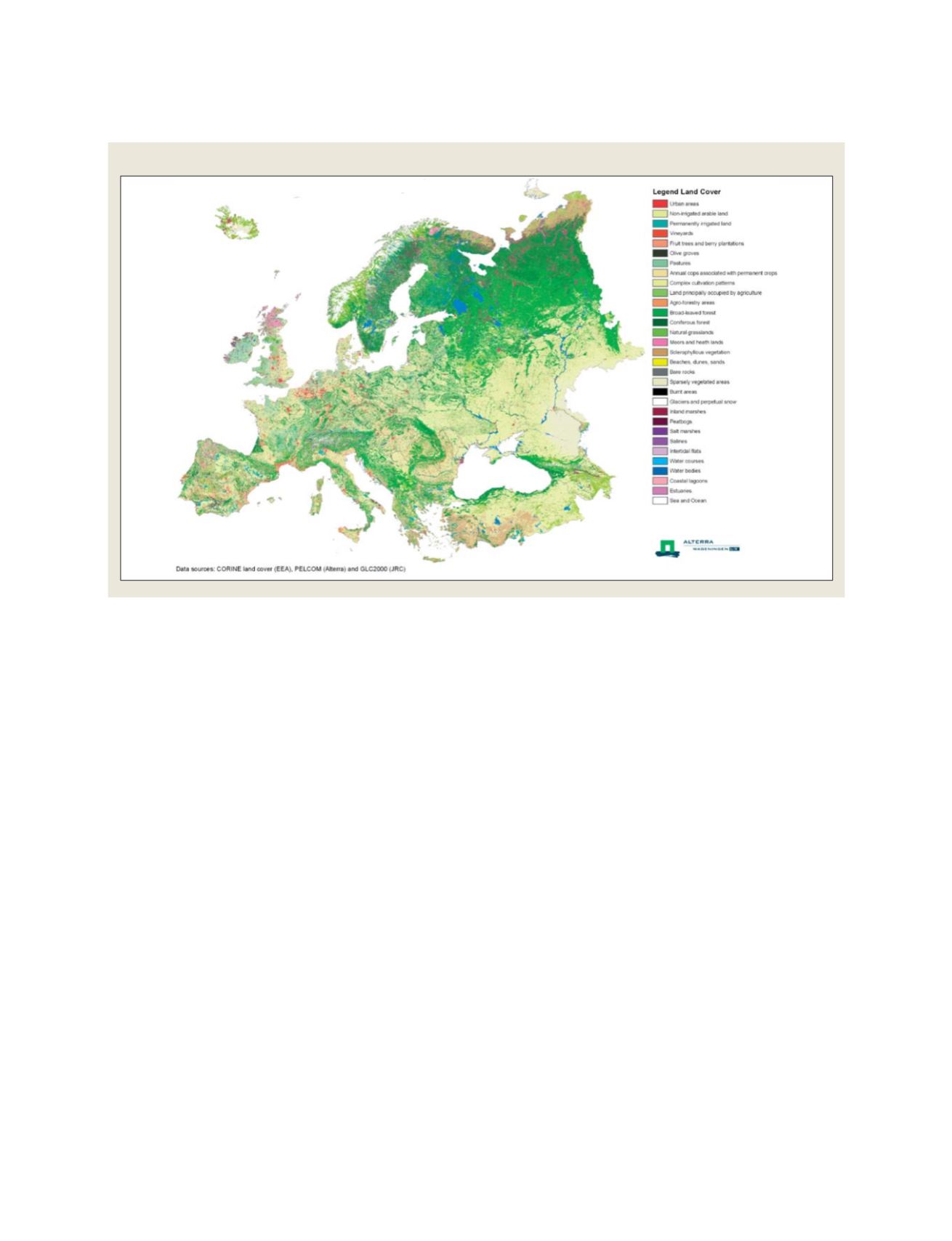

[
] 259
Moreover, such colonization initiates unpredictable
ecological interactions between new organisms and the
surrounding environment, fosters new ecosystems
(Hobbs et al., 2006),
3
and potentially reduces the origi-
nal variability of natural habitats.
Bridging scaling gaps
Limitations relating to generalization are inherent to
experiments carried out under scale-limited laboratory
or field conditions. Such small-scale experimental design
is unable to reveal the complex spatial and temporal char-
acter of larger scale ecosystems and their biodiversity
response to accelerated climate change.
Nature’s complexity is successively scaling various
structures, states and processes over time and space. The
chain of scales starts at the ultra-cellular structure of plant
membranes, accommodating instantaneous biochemical
processes (occurring in fractions of seconds), that are
scaled through cellular tissues, leaves, shoot/branches,
crown canopies, habitats and ecosystems up to biomes,
ending with the global biogeochemical cycles (having
response times of several years). The latest state-of-the-art
science in Earth observation related remote sensing (RS)
enables the bridging of these scales and processes using
radiative transfer based models, data assimilation and
evidential reasoning (Schaepman, 2007a).
4
Various air- and space-borne Earth observation instru-
ments are currently in use for regular large-scale and
long-termmonitoring as well as regional, high spatial and
forced to either adapt to these new climatic regimes and run the risk
of extinction, or migrate into more suitable environments.
An average temperature change of one degree Celsius can trigger a
shift of ecological zones by up to 160 kilometres. The predicted
temperature increase of four degrees Celsius over the next century
may therefore cause the migration of certain Northern Hemisphere
species by up to 500 kilometres (Thuiller, 2007).
1
Such rapid and
extreme changes in environmental conditions combined with physi-
cal-geographical barriers may overwhelm the ability of species to
modify their physiological-seasonal strategies, or follow shifting
climate by colonizing new territories; thus lowering their survival rate.
Alternatively, extreme events or shifting climate could trigger an inva-
sion of opportunistic species, which may to some extent cause a
biodiversity increase.
Apart from ecosystem disruption due to climatic change, biodiver-
sity is also facing direct negative impact from anthropogenic and global
human activities motivated by rapid, often economical, benefits. A
prominent anthropogenic impact is large-scale wood logging in the
tropical rain forest. This results in myriad negative effects, such as soil
degradation and biodiversity loss.
It has been observed that land-use change in the year 2100 forced
by climate change alone, will be the largest influence on biodiversity
decline (Sala et al., 2000).
2
The strongest negative impact from biodi-
versity loss is currently predicted in Arctic, alpine and boreal
ecosystems. Steadily growing long-distance transportation and trade
globalization is further fostering the dispersal of exotic invasive species.
Due to their progressive life strategies, these invaders manage to
occupy the niches of the original conservative species, resulting in
biodiversity homogenization and/or loss.
Pan-European land cover map
Source: CORINE, PELCOM and GLC2000
S
OCIETAL
B
ENEFIT
A
REAS
– B
IODIVERSITY
















